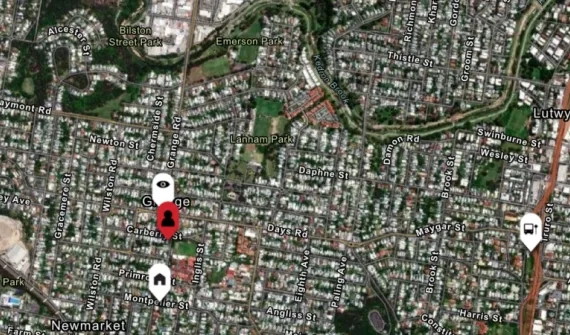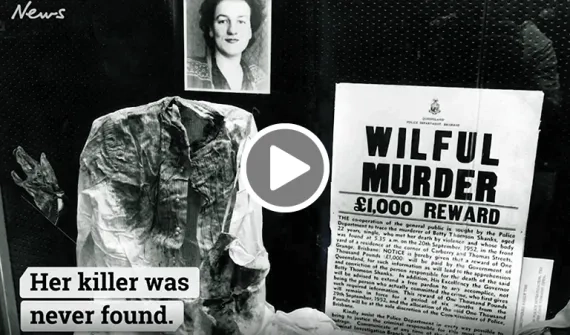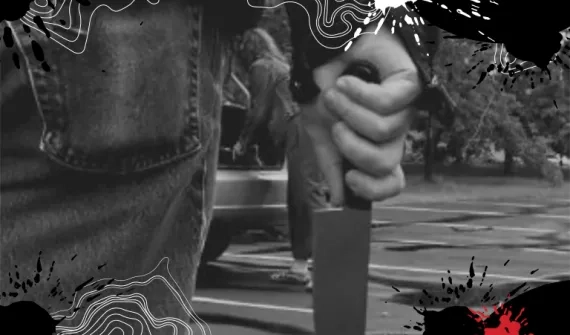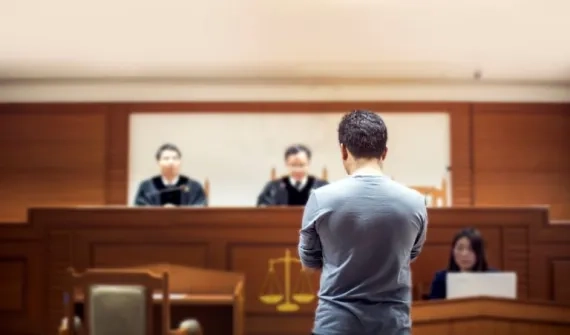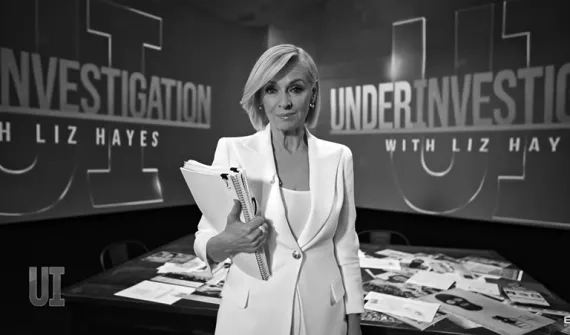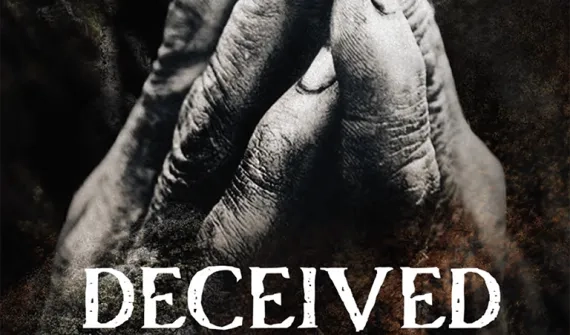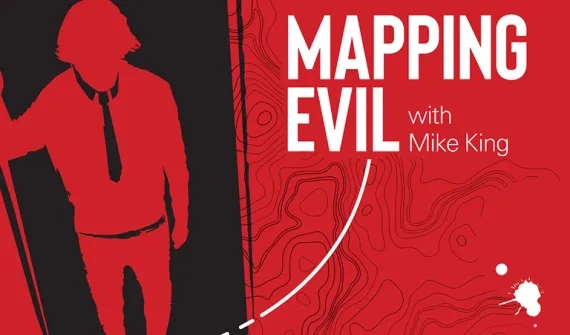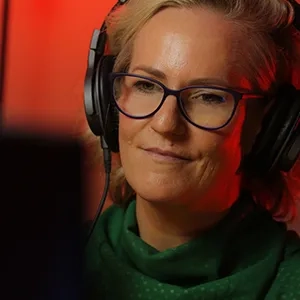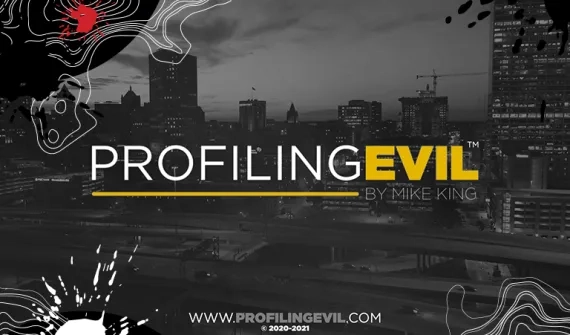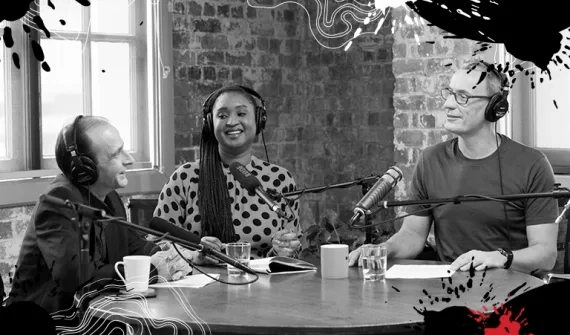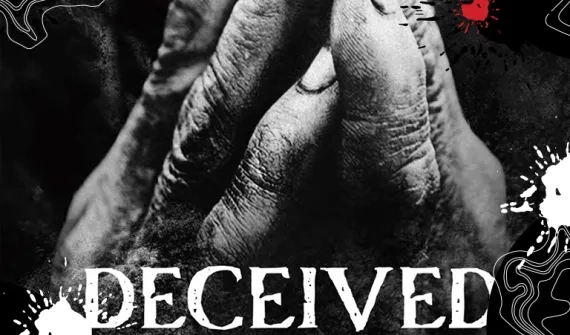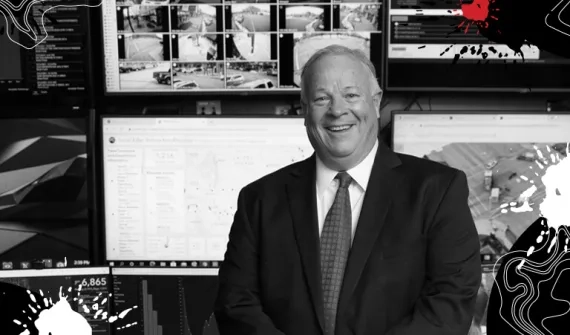Exploring the terrain of where innocence is lost
Across the course of his career, Mike has found that a skilled predator will almost always leverage the element of ‘geography’ to turn the tables in their favour. Whether a victim’s risk level is inherently high or low, and regardless of whether the victim is known or a stranger to a perpetrator – geography inevitably plays a key role in giving evil the upper-hand.
In this episode, Mike and Tory walk through the investigation into the brutal slaying of seven-week-old Ian Wing. Mike discusses the disturbing patterns of behaviour shown by Ian’s murderer in the lead up to the little boy’s death, while Tory poses the question of whether modern day technology could potentially map such behaviours to prevent others falling victim to a similar fate.
Tory then challenges Mike to show how the element of ‘geography’ could be used to unravel the coldest of Queensland’s cold cases; the 1952 murder of Betty Shanks. With a crime scene full of contradictions, Mike shows just why he’s one of the best in the business – suggesting all is not as it may first seem.
Join Mike and Tory as they unpack the crimes where all innocence was lost – and learn more of the explosive revelations from Mike’s investigation into the Betty Shanks murder.
…Well, when he became angry, he would go into the yard and he'd pick up one of the pets. Then when he was sure they were watching him, he'd kill the animal in front of them. Just to send a clear message of who's in charge.
Discover more about crime mapping
Never miss an episode of Mapping Evil – subscribe now.
About the hosts

If you have information about any unsolved crime or suspicious activity, then you can share what you know with Crime Stoppers, without saying who you are or getting involved. Call 1800 333 000 – or go to crimestoppers.com.au.
- Click to view the The Geography of Victimology transcript
Mike: Hey folks, Mike King here. Before we kick off this last episode of Mapping Evil Season One, I wanted to let you know that the cases that Tory and I are going to explore today include some difficult content. They're two cases that have really had a profound effect on me.
Now I'm telling you this upfront, because it might be difficult for some of you to hear. In fact, it's going to be downright hard. Frankly on both of us. I'm sharing these stories because of a beautiful seven-week-old child named Ian, and a woman from Queensland. I was privileged to become acquainted with her. Her name is Betty, and frankly I'll never forget either one of them.
I'm compelled to share their stories in hopes that they are never forgotten and that their stories help us all to prevent similar events from ever happening again.
So I hope you'll stick with us.
Tory: Support for this episode comes from the country's leading mapping technology and services provider, Esri Australia. To learn more about how Esri tech is making a difference in crime analysis and public safety, head to esriaustralia.com.au/crime.
Mike (voiceover): The child died from unnatural causes. And this case was turned over to local law enforcement in hopes that our team of experts could unravel this little tyke’s mysterious ‘who dunnit’.
Tory: I'm Tory Shepherd. And this is Mapping Evil with Mike King.
Mike (voiceover): This was this beautiful, low-risk woman who is murdered and left on the side of a road – thrown over a fence and into a yard.
Tory: The podcast that explores true crimes, the craft of criminal profiling and how clues from geography and demography can help solve heinous murders – and maybe even cold cases that have languished in dusty files for decades.
Mike (voiceover): The twist is instead we started looking at behaviour and geography together and using that to try to bring more light to a case
Tory: Episode Nine: The Geography of Victimology.
Mike (voiceover): We know where the body is and we have to think about where the people that heard the screams were calling in from.
Tory: Today, we're going to explore some truly perplexing crimes with the help of our profiler-in-chief Mike King. Mike has been catching killers, busting cults and bringing criminals to justice for more than four decades and has gone on to use Geographic Information Systems and data analytics to solve some of the world's most puzzling crimes.
Mike (voiceover): Geographically looking at what the lighting was like, what the concealment was like, what sound travels like – and that's where GIS can really step in and provide insight.
Tory: Now if you're a regular listener of Mapping Evil, you will know we always give a graphic content warning, but today's episode may be particularly distressing to some as it includes a rather brutal case of domestic violence.
If hearing this story makes you feel like you need to speak with someone, then DV Connect is ready to talk. You can call them on 1800 811 811
Tory: Mike, we're going to discuss a terrible case you solved in the United States where some important clues lay in the geography of the crime – before casting that perspective on a very famous Australian crime that remains unsolved to this day.
So let's begin with the very sad case of Ian Wing, who was just seven weeks old when he died. Can you tell us about Ian, Mike?
Mike: Yeah it really was not one that made the news sadly. It was investigated by the medical examiner and then the local police department. That police department jumped into action and did their best to solve the case. But there eventually ended up being several potential people who were responsible for the injuries to the child.
They were unable to solve the case. So they moved it up to the next authority – and in our government, we work at the local level, then we go to a regional level and eventually to a statewide level and then finally to the federal level. The regional level was also unable to solve this case after investigating it.
They sent it up to a new unit that we had developed to look at unsolved criminal cases, unsolved homicides and sexual assaults – and that's how we became aware of the case.
Tory: Once you were aware of it and started looking into all those circumstances that happened, it often seems to be the case with child protection cases they slip through the cracks.
People give up on them, they languish in files. But this ended up with you and you were able to say this wasn't just a random case of a dead child in shocking circumstances. We can have a look at the circumstances around his dad, around the history of this boy's father. What sorts of things raised flags with you when you were trying to work out who had actually done this to the child?
Mike: One of the first things we were troubled by was the fact that the parents were immediately pointing to other people – a babysitter, a family member, one of the children – as potential kinds of reasons why this would have happened. And again, the reasons I guess on paper could look and make fairly good sense.
One argument was that the mother-in-law had the child in her bed and must have rolled over and that caused the injuries and the child died as a result of that. Another reason that was given was that one of the young children – an older brother to this infant – in an attempt to hold him, squeezed him and hurt him, and that caused the death.
Those kinds of scenarios just didn't make sense when we looked at the totality of the injuries. As we examined those injuries, we started to see a much broader picture painted.
Tory: Can you tell us a bit more about the injuries?
Mike: Sure. A real responsibility of law enforcement is to think about how to present information in a way that makes good sense. So that a member of a jury or someone else could say ‘oh, this is reasonable. And this person probably did this.’
This is a seven-week-old baby whose death was the result of multiple unexplained injuries. It simply wasn't a case of death by natural causes. It was murder. One of the things that the father said was “we were told that our child had brittle bone disease”. Well, you have to take that at face value and talk to the medical people and see if there's something that would support that.
The little tyke came into this world with physical problems already. He only had one kidney and he was missing his inferior vena cava, and those are things that he could survive with. But again, none of those would be things that would cause death. The injuries were so substantial and what we discovered after looking at them more closely was that they happened in three distinct episodes – because the body will start to heal and there's physical evidence that would support the body healing at different stages.
So we then started looking at this as a homicide, not as an accidental death like someone rolling over. We had to really start to consider, who are the most probable people to do something – not once, not twice, but at least three times in that short seven-week life span.
Tory: I guess that's where you have to start with this body, with the medical examiner’s findings and start to work out who was where and at what time. So who found the body?
Mike: The father found the body and there was a really interesting thing that occurred – something that wasn't uncovered initially in the investigation that we discovered later. This is one of the challenges with these cases, you can't just take one or two testimonies and try to develop a theory based on that.
In fact, Sir Arthur Conan Doyle always said it's a mistake to theorise before you've gathered all the facts because you spend all of your time twisting these facts that come out to fit your theory, rather than gathering facts and then having that develop your theory. As we started to talk to different people, we started to see some interesting things come up. One is this fact that the father reported the child as in the bed, deceased. Then of course, the paramedics and the first responders confirmed that when they arrived.
He's the one who made the initial discovery and there were some intriguing things that happened around his discovery that really started to cause us to look at this a little closer.
Tory: So the father – whose name was Mark – you started to pull apart the threads of his history and his past. What did you find out about him?
Mike: One of the first things that I wanted to do is of course learn as much as I can about him and about this little infant. I started to look into his background. He had been married several times before – this was actually his third marriage. I did something that the other investigators just frankly didn't do in that particular case – I went back and interviewed the two previous wives.
I specifically talked to them about relationship things and about issues surrounding any kinds of violence and I started to uncover some really interesting things that Mr Wing was involved in during those previous marriages. Things that showed his need for power and dominion and control in the relationship and the ways in which he would control individuals. That's what led us to really start looking at this case a little differently.
Tory: This is often the case in family violence. Isolating somebody, taking them away from their support groups, making sure that you're the one who knows what they're doing. Tell us about what he had done with his third wife in terms of removing her from outside influences.
Mike: Actually it was his previous two wives. When he married them he immediately moved them to areas where they were isolated from family and friends. One of the other peculiar things that he did – and we see this in these kinds of personalities – is he started to exhibit some strange control tactics, like removing parts of her vehicle so that she couldn't leave when he wasn't around. Or taking away her mobile device and disconnecting the phone so that she couldn't make phone calls out of the home.
In essence he's isolating her and preventing her from reaching out to the safety net that she may have had before marrying him. All along the way he's trying to convince her that he's doing this in her best interest.
Tory: I feel as though if you were on the outside looking down on the history of Mark Wing, you could almost see that happening. So first wife comes. Immediately they move out to somewhere isolated. Can you start to look at the way those movements happen and work out what kind of guy Mark Wing is?
Mike: The secret to profiling and the benefit you have when you are able to go back and look at multiple events, is you start to see behavioural characteristics that really paint a picture of who this individual is.
Not only was this control going on but we also learned some interesting things that in order to maintain control, especially as it accelerated and the relationship became more volatile, this individual Mark would threaten against things that were dear to his wives at that time. In one case she had children and it was another wife had no children, but the one thing that was common was that they had pets.
Well, when he became angry he would go into the yard and he'd pick up one of the pets. Then when he was sure they were watching him, he'd kill the animal in front of them – just to send a clear message of who's in charge. That was really traumatic as you might guess – even for people to listen to now. Imagine being someone who's terrorised and afraid and having that happen in front of them. It gave him complete control over his spouses at that time.
Tory: If you had at your fingertips all the amazing technology that you do today in terms of trying to map out exactly what went on with the various people involved. Would you be able to start patching that together?
Mike: What we can do with geography is we can start to look at where are these relational things happening? We're very duplicative in our efforts every single day. You probably go every morning to the same coffee house to grab a cup of coffee before you drive to work. I would suspect that you purchase fuel at the same gas station. The idea is that we can really start to see why people are selecting different kinds of locations.
Now, I don't know if that would have prevented this child from being murdered at that point but it certainly adds clarity and understanding at the end as we start to look in totality at the site selection used each time or the location where the families were moved to or where they first come in contact with each other.
Those kinds of things become really important from a geographic standpoint.
Tory: So, you ended up talking to Mark Wing and in a newspaper report from the time you described the profile you created about him as “bizarre and enlightening”. Tell us what you found out about him and how that helped you get a confession from him in the end.
Mike: We began to reveal who he was through other people. We heard the testimony of the mother of Ian as she talked about what she saw on the day that he died, the relationship that they had, the way in which she reacted to things. Then as we looked at the forensic evidence, we started to see that there were clearly some inconsistencies that needed to be researched.
One thing that became obvious over the course of the investigation was each of the spouses talked about the fact that there was some dysfunction within the sexual relationships that they were having – and they wondered if he was involved in a same-sex relationship. Now that became kind of interesting because when I spoke to him on a few occasions, he was always very macho. It was all heterosexual kinds of discussions and ‘men are in charge of the family’ and you could start seeing this characteristic and personality coming to light.
But along the way I learned of a person that he had been involved with by the name of Earl. So I just decided one day to go to the prison and have some prison lasagne with the guy. We sat down and as we were talking, I said “hey, I'm here to...”
Tory: Prison lasagne – now, that's literally lasagne? That's not a euphemism for something weird that happens? It's just a lasagne?
Mike: No, it's absolutely lasagne. It's the real thing, but it's prison lasagne which means it's not that good Tory. But as we sat down – and this fellow was like six foot four or five and quite a towering person, I'm six feet – but we sat down and I said “hey, I want you to know that Mark Wing said hello to you.”
And he threw his hands up in the air and he said “oh, I remember Mark was such fondness.” Of course, at that point, he started to share this relationship that they had, which was a very intimate relationship over many, many years. Well, that became one of those little things that you can use in an interview to ascertain truth or whether someone's being deceptive or not.
In the course of interviewing him I brought up if there were any issues with same-sex attraction or anything like that. He clearly said that there was not at that point. I used that as a way to say “listen Mark, I know the truth about you. I know everything you've done. I know that you killed Ian. The difference and the only thing you've got going for you at this point is I'm giving you a chance to explain how and why.”
And at that moment he chose to confess to killing his son.
Tory: What did he say?
Mike: Well it was really frustrating to listen to. Of course, you have to be compassionate and understanding as you help people think about having to reveal your darkest secret to someone.
As we talked, he described how he became frustrated. All his life he had always wanted two children. He married a woman with two children and suddenly she got pregnant. This is wife number three. He told her to abort the child, which she did. Then within a few weeks she was again pregnant.
During the same period of time, he went in and tried to get a vasectomy and the pregnancy surprised them both. Well the mother couldn't go through another abortion. So they had an argument. She said “I'm keeping the baby” and eventually he noticed her resolve and decided to stay with her. But he had a problem. He had always fantasised about having two children. No more, no fewer.
This little Ian came into the world and that represented child number three. He was bent on getting that child adopted out. When the mother wouldn't, the only way he could satisfy his fantasy – and again we can't understand why this became important to him that it was this perfect number of two – but he was willing to kill the child in order to accomplish that goal.
That's what eventually led him to being convicted and placed in prison.
Tory: Mike, wow. I mean this is what we're doing in this podcast, right? We look at how you can go outside of all the normal things that somebody would look at. We can look at their geography around them and we can start to use these little bits of information to build up the profile – which you then very cleverly use to crack the case.
What we're going to do now is take the way that your brain works and apply it to a cold case here in Australia. Do you feel like you just have this different approach? I mean, you were one of the first people to come up with this approach of building up a map around a crime that had been committed.
Does it just come naturally to you after all these cases?
Mike: I think law enforcement has been using pin maps for years and they'd stick those old pins in the map and they'd look at clusters of pins and say ‘hey something significant is going on here’. What we tried to do is start to look at behaviour in a geographic way.
That started to turn on some lights that we weren't seeing before. So pin mapping and the fact of doing crime analysis – and even geographic profiling of where are crimes happening and what are the similarities – has been around for a long time. The twist is instead, we started looking at behaviour and geography together and using that in addition to all of the other forms of evidence that we use to try to bring more light to a case.
Tory: I feel as though the Betty Shanks case is really right for that kind of approach. When I was reading about Betty Shanks I kept thinking in Australia we quite often use the phrase, ‘only in America’ for many things – just anything that is really bizarre. We particularly think of the United States as having the most shocking murders, but that's not necessarily the case. You have more people and you definitely have more gun murders, but we have some really, really violent crimes.
I think it's the cold cases that really, trigger people's imagination and capture their fear. And that brings us to Betty Shanks – which is a case that is often referred to as the one that stole Brisbane's innocence. That's something that often happens – there's one crime that'll change how a suburb or a place goes from feeling like a place of innocence to a dangerous place.
So, what do we know for sure happened in 1952 to Betty Shanks?
Mike: Well, this has been a fascinating case to me. I looked into this about a year-and-a-half ago when I was in Australia and the case was just so amazing to me. But the things that were so peculiar about that was this beautiful low-risk woman who is murdered and left on the side of a road – thrown over a fence and into a yard, a backyard.
There was nothing to explain why she could have possibly been a victim. There were a number of suspects that have been named over the years and each of those suspects have really intriguing things about them. But it caused me to keep going back to, let's not talk so much about the ‘who dunnit’, but more about who's the victim and why did she become a victim?
Tory: There's this really cool map that you can see actually on the Mapping Evil website where you can see that there were witnesses – people saw her coming off a train, people saw her heading down the road. She'd run into an acquaintance and actually people even heard screams at the time of her murder.
Then she's found violently beaten, dead. The only clues that were picked up at the time were you know a couple of bloody handprints on the fence. But what would you do walking through that, tracing behind Betty Shanks? Watching her walk along, knowing that there was seven people heard her scream?
What would you want to find out from that kind of information about what happened to Betty?
Mike: This is someone that we would classify as a low-risk individual and the way we would do that is we would look at her lifestyle and the kinds of people that she hangs around with and the kinds of environments that she allows herself to get into. What we can learn and what we've learned after looking at hundreds and hundreds of violent felonies, is that low-risk people are generally perpetrated upon by somebody who's known to them and they are targets of whatever that aggression is.
Now on the other end of the spectrum, someone like a sex trade worker we would consider to be a high-risk victim and they would be perpetrated upon by someone who's a stranger and it would be more of an opportunistic kind of a killing.
The thing that really changes all of those basic rules is situation, circumstance or environment. If you're okay Tory, I'd like to just maybe step back and talk about her arrival at The Grange Terminus and just kind of what was happening around there and maybe that will help paint this picture for you as we go along.
Tory: Yeah, let's do that and also if you can talk a little bit about low-risk versus high-risk – which is not obviously in any way blaming the victim but just the different circumstances and places that they find themselves in that can increase the chances of something going wrong.
Mike: Yeah, okay. Let's, let's talk about you for just a moment. Again, we're not going to do this to put the pressure on you. But I would suggest that you have a close circle of friends. Would that be fair?
Tory: Yep.
Mike: Those are the people that you generally associate with. If you go out, you go out with people that are known to you.
Tory: Yep.
Mike: I would suggest that you probably have a tight relationship with your family, and you keep in touch with your mum and dad and your siblings. But your circle of influence is pretty small, even though you're well-known you have a name that's well-known – but you personally keep yourself in a pretty confined space where it's safe. Is that fair?
Tory: Yeah, that's absolutely fair. I mean, my work as a journalist. That's where I could switch, from being low risk to being high-risk because sometimes going out on a job I hang out with bikies or whatever – but no, on the whole, I would be a low risk.
Mike: There we go. So let's just say you're this low risk victim. And now on the other end of the spectrum we have a high-risk person like a drug dealer or a sex trade worker. Everyone that they're coming in contact with is a stranger. So now we have this kind of level set.
If you were today to receive a job to go out and let's say do a story on the bikies, and you leave your home and your close circle of friends. And let's say for some reason on this particular occasion you don't take a photographer with you. You're there alone. Just this change of circumstance starts to elevate your risk when you go out.
Tory: Yeah, absolutely.
Mike: So Tory, I think the interesting thing is as we look at your life – and now let's assume you're going to interview one of those bikies.
As you leave what is a low-risk environment just by merely leaving your home and going through an area that you're unfamiliar with, you start to elevate your risk. Now if you chose a public space that could decrease that risk level – if you went to an offsite location where you could just be one-on-one because they don't want to be seen – it could increase.
So we see this low risk person – you, who could suddenly become high-risk just by changing the environment and the circumstance. Does that make good sense?
Tory: It makes perfect sense – and has convinced me never to meet bikies alone after dark again. Thank you, Mike.
So let's go back to the tram and Betty Shanks getting on that tram.
Mike: I think one of the interesting things there to keep in mind is that there really are three different potential crime scenes when we're looking at a case like Betty Shanks.
The first would be the’ initial contact spot’. It's a geographic location on the map, and we don't know where Betty Shanks and her killer come into contact. But this initial contact spot becomes very important because it can teach us a lot about the offender who's responsible for the case.
Did that initial contact spot happen by the university when she leaves or from work and she gets onto the tram in Brisbane and is heading out? Is it at The Grange when she exits the tram that she comes into contact – but somewhere those two people come into contact. Betty may never have been aware that they even came into contact, but there's a place where those two connect.
Then we have the crime scene. What we see with Betty is that she exits the train, there are people who actually report seeing her exit the train. So we know the timing of when she got off and we know where her body was discovered. So we can start to theorise that's where she's walking. In fact, it makes great sense because it's actually in line with the direction she walked every single day as she walked back to her home or from her home up to the Terminus.
That becomes the second potential crime scene and it's called the ‘actual crime scene’. The reason why we can theorise that that's the crime scene is because there is where we see physical evidence, like the teeth that were dislodged or physical evidence that's on the road.
Then we have what's called a ‘disposal site’ – or the place where the body is eventually left. In her case it makes more sense that the actual crime scene occurred outside of the fenced area. Then the disposal site occurs inside or the place in which the offender hides the body.
Tory: You've got these three crime sites – the contact, where it happened and the disposal site. We've got a few suspects, but we need to work out if and when they cross paths with Betty. So then you can start to look at their paths. We know Betty's – and again, that map on the website is really great. Let's just quickly go through the suspects.
There was a thought that it might've been a police officer hit her with a bike.
Mike: I thought that was really interesting, Tory. The reason it became so interesting, somehow that theory was pitched and I think it was originally pitched because some of the physical evidence, the mark on her body, resembled what could be considered a part of the police uniform on someone riding a police motorcycle.
Now, certainly if she were struck by the motorcycle that could cause such a violent assault on her that perhaps the teeth could be dislodged, but I think there would be other physical evidence there and of course there's some things that we haven't seen. But that doesn't account for how she got over the fence and then of course, how those bloody handprints get on the fence after the fact.
But again, how do you discount the police officer? The thing that becomes so intriguing to me is, wouldn't there be other evidence like a damaged motorbike? An officer, if he hit someone that violently, would probably be thrown from the bike and there would be other kinds of physical evidence in the roadway. I've never seen anything that supports that.
Tory: Again there are all these other theories. Another theory that took off was that it was a soldier, and that was because people could look at a map and say ‘hey, there are all these soldiers hanging out over here on this specific night’. So that's where the perpetrator and the victim could have crossed paths.
And there was something in the type of footprint that could have indicated a soldier's boots.
Mike: Yeah I thought that was an interesting one too. Again, when we don't understand who's potentially responsible, we start grasping at straws and because there was what appeared to be a boot print on her body someone assumed. The boot would equate to a soldier’s – and there was an event going on in the area where soldiers were in attendance.
It seems like it would be pretty easy to figure out if that in fact was accurate and who those people were in the area – whether they were on leave or not. It makes you wonder what the physical evidence that we don't know would tell us. For instance, why would a soldier feel compelled to beat someone and throw them over a fence that they don't know? This just appeared too personal in the way in which she was beaten.
Tory: So next on our list of suspects we've got the doctor. This is a guy who it doesn't necessarily appear connected – but there was a doctor in the local area who committed suicide not long after and rumors seemed to connect. Is it just because they were kind of in the same area?
Mike: I think there's been suggestion that the doctor knew Betty or knew of her and that there was a relationship – either a patient doctor relationship or something else. And there's more that needs to be studied on that.
Not many people have shown a lot of interest in the doctor story, but it still needs to be explored a little bit as to why he may have committed suicide so close to this event. More likely it fits the scenario that I’ve read that there were business transaction problems and other things in the business. Perhaps there was longstanding depression. I think it needs to be explored further.
Tory: Then there was a guy who seemed to be a little bit of a stalker for Betty. He seemed to believe that he had a relationship with her that people who knew her said wasn't actually the case. She wasn't actually interested in him. So this is the handyman.
Mike: I found that interesting. Of course, you would want to look very closely at someone like that. But if I were to lean on where most of the evidence seems to point, he would be less significant than others.
Tory: Right. So from those guys, what we don't have – if we're looking at our map of Betty Shanks making her way from that tram station hoping to get home and never making it – we don't have the connection point there with any of those suspects.
I guess it's not surprising that in a cold case like this, various theories have been brought up and not all of them have stood the test of time – but have you come across any intriguing new leads that you think you'd like to track down?
Mike: Well, it's funny that you'd mentioned that Tory because I've been examining the Betty Shanks case since 2019 when a local journalist asked me about my thoughts on what may have happened. I shared my thoughts on victimisation and predatory behaviours, and the most peculiar thing happened. I was contacted by someone willing to share relevant information about this murder.
Tory: So what's happened?
Mike: Well, I did what any investigator would do. I captured the person's story and then I handed it over to the appropriate authorities for further investigation.
I think we need to come back to the case – there’s so much more to be told and I think it's going to be a great way of showing how GIS technology can really help law enforcement with these cold case investigations. It's my understanding that this is still the longest standing cold case in Queensland.
Let's see whether or not we can finally help the police and the surviving family members get some answers.
Tory: Mike, that sounds like a plan. I think it would be amazing for people to have a bit more information about what happened after all of this time. But we can't just leave it there.
What else would you want to know, for example, from the actual scene? What other information would you like to draw out so you could learn more about how these two different paths of the victim and the perpetrator intersected.
Mike: think one of the things that I was really intrigued with when we put the map together that's on the Mapping Evil website, you'll be able to see that there were some interesting things geographically happening there.
One is this is a downhill walk from the Terminus – and the exact distance downhill I haven't been able to quite figure out, but it looks at least like 20 meters difference from where she starts to where this crime occurs. You can actually see how the lighting would start to get worse as she gets into that area – so it was a very orchestrated location to do this.
You can see why she very naturally passed over to the east side of the street as she walked down from the Terminus. As we look at the exact location where the assault occurred, it starts to create so many questions for me. For instance, the motorcycle collision with the police officer. It could make sense if someone's reaching a speed high enough in that location that they could have an accident, so we have to kind of reconsider that geographically.
We have to think about where the people that heard the screams were calling in from. We know where the body is, and we can theorise where the actual crime occurs by again, things like marks in the street or the dislodged teeth. But it would be so helpful to be able to get that information and plot out where those people are calling in – including the neighbour next door who comes out. I believe that neighbour was even a retired police officer.
I think just looking at it geographically – looking at what the lighting was like, what the concealment was like, what sound travels like in that area – those kinds of things become really important as you look at these investigations and that's where GIS can really step in and provide insight.
I'd love to get what the moon was like. Was it a full moon or was there no moon? What was the weather like? Was it raining or was it a clear night? All of those things become very important when you look at cases like this.
Tory: Mike, I think I'm starting to learn from you because immediately you said the teeth that I remember reading that she was hit with such force that her teeth flew out.
What I think I'm learning from you is that you could maybe get some more information about the direction of the impact from where her teeth then ended up. And then when you talk about everyone hearing her scream and those seven people, you could start to draw lines couldn't you of where the people who heard the scream and try and work out exactly where the impact occurred?
Mike: Exactly. There's new technology that's used in major cities around the world today that simply triangulates the sounds of gunshots. Of course this is a bigger problem in the United States than in Australia. It helps triangulate, based on sensors. If we could triangulate based on those witnesses, we can start to learn things.
I keep going back to the fact that I think we can tell where the actual crime scene occurred. We certainly know where the disposal site was. So maybe it just helps validate that information.
Tory: Well Mike, I would say it's been fun… and actually it has been. Even though we're talking about a couple of vicious murders, but particularly you talking about, you know, working out who Mark was…
I think we have a plan for Season Two. I am looking forward to taking a closer look at the mystery surrounding the death of Betty Shanks. So, Mike let's catch up soon and do it all again.
Mike: Well, that sounds great Tory. Thanks a lot. I cannot say goodbye without reflecting on how much I've enjoyed this experience.
It's really been great to work alongside you. To all our listeners I want to say, thanks again. It has been great being along this journey with you in our inaugural season of Mapping Evil.
Tory: Mike, I would like to echo everything you said about our wonderful listeners and say that actually working with you, the pleasure really is all mine.
Before we go we'd like to thank today's sponsor Esri Australia, whose mapping solutions help public safety agencies across the country to predict and fight crime, track the crimes and keep us safe. I feel that that's sort of your job description, but it's also what Esri does.
And you can download a free trial of their software at mappingevil.com.au – which is where you can also see all that fabulous geographical information about Betty Shanks.
Mike, thank you again for your insight into the jigsaw puzzle of perpetrators – and into how geography and demography can throw these new lights on crimes and the landscapes that bring the criminal and the victim together. I'm very much looking forward to talking to you again.
Mike: Thank you Tory, it’s my pleasure.
Tory: If you found the content covered in this podcast distressing support is available from Lifeline on 13 11 14. And, if you have information about any unsolved crime, please contact Crime Stoppers on 1800 333 000 or go to crimestoppers.com.au.
And that's the end of Season One of Mapping Evil with Mike King. Thanks so much for listening. We've managed to cover a lot in this series, but there's still plenty more to learn. If you go to mappingevil.com.au you can find lots more resources – including all of those great story maps that retrace the steps of the crimes discussed in the series.
For now though, keep an eye on your podcast feed for more bonus episodes of Mapping Evil with Mike King. We'll be back soon for Season Two, which you really won't want to miss.
If you enjoyed this episode, please make sure you leave us a review and subscribe wherever you get your podcasts.
This is a Boustead Geospatial Technologies production. This episode was narrated by me, Tory Shepherd and Mike King.
Sound design by Fig Media with editing support from Kim Douglas, Gabi Paterson, Circa3 and Podbooth Studios. Artwork by Superscript and our Executive Producers are Raquel Jackson and Alicia Kouparitsas.
And finally, this production would not be possible without the support of Esri Australia.





 VIEW TRANSCRIPT
VIEW TRANSCRIPT